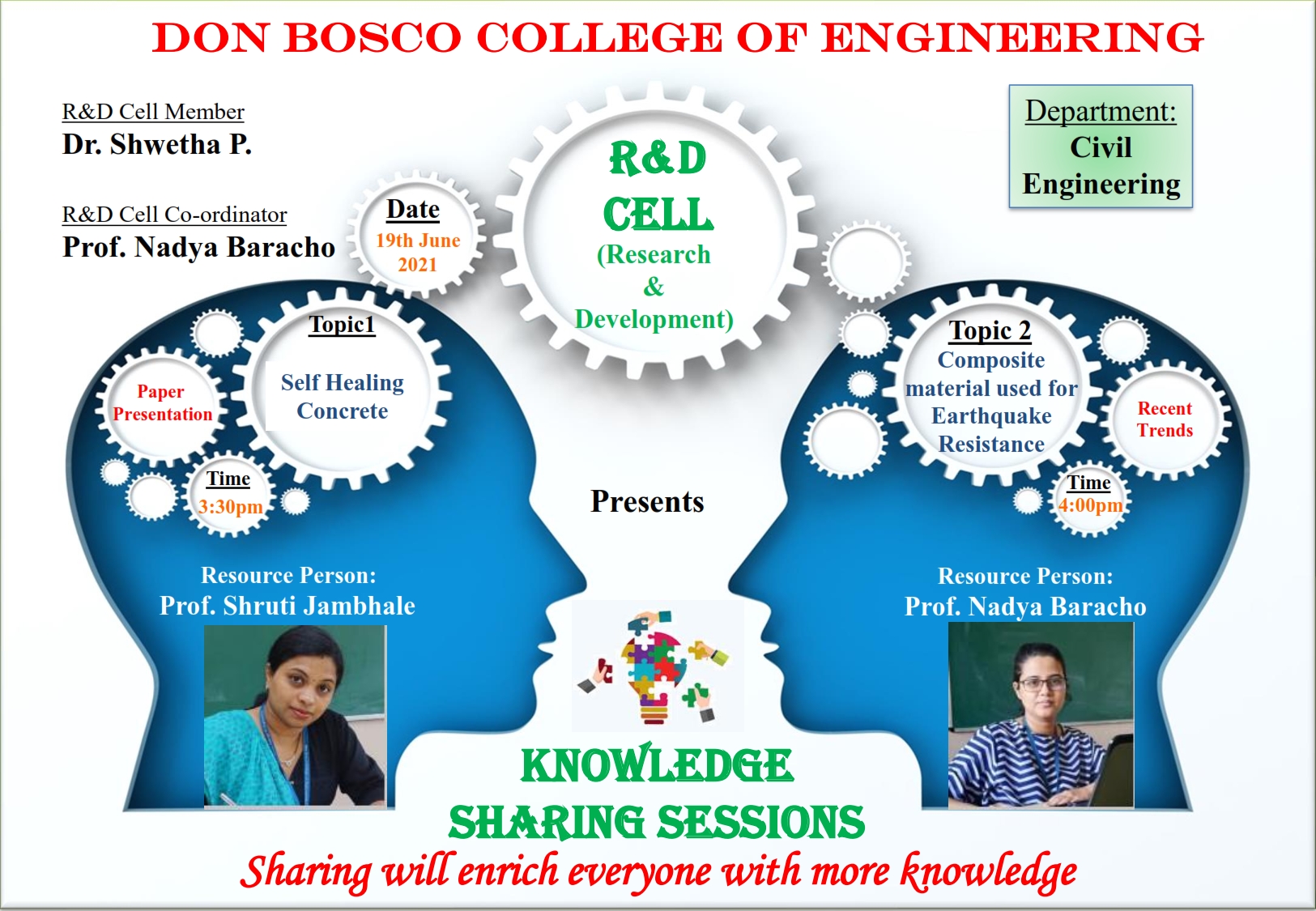R&D Knowledge Sharing Session on ‘Self Healing Mechanism on Concrete’ & ‘Use of CABKOMA rods for Earthquake Resistance’

The Civil Engineering department had its sixth session under R&D cell on the 19th April 2021 at 3.30 P.M. The two speakers for this session were Prof. Shruti Jambhale and Prof. Nadya Baracho.
Prof. Shruti presented on ‘Self Healing Mechanism on Concrete’. The speaker explained that to overcome the problem of cracking in concrete, autonomous self-healing mechanism is introduced in the concrete which helps to repair the cracks by producing calcium carbonate crystals which block the micro cracks and pores in the concrete. The speaker also highlighted that the selection of the bacteria is done according to their survival in the alkaline environment such as B. pasteurii, Bacillus subtilis and B. sphaericus.
In her study, for the growth, bacteria were put in a medium containing different chemicals at a particular temperature and for a particular time period. It was found that bacteria improves the structural properties such as water permeability, durability and compressive strength of the normal concrete which was found by performing different types of experiment on different specimens in comparison with the conventional concrete and from the experiment, it was also found that use of bacteria helps in self-healing property of concrete.
Prof. Nadya presented on ‘Use of CABKOMA rods for Earthquake Resistance’. CABKOMA rods were introduced as a composite material made of carbon fibers in a thermoplastic resin. The rods are used as retrofitting for existing structures to resist earthquakes by either connecting the rods from roof to ground or by using as a shear wall. The advantages of this rod were summarized as (i) Light-weight, high strength and durable; (ii) High productivity at low cost; (iii) Can be bent easily on application of heat making it workable on site; (iv) Easy to install and maintain; (v) Adaptive to various structures and materials like timber, concrete, masonry;(vi) Reduces stress on structure by providing alternate path for transfer of forces from roof to ground and reducing sway.













 Visit Today : 712
Visit Today : 712